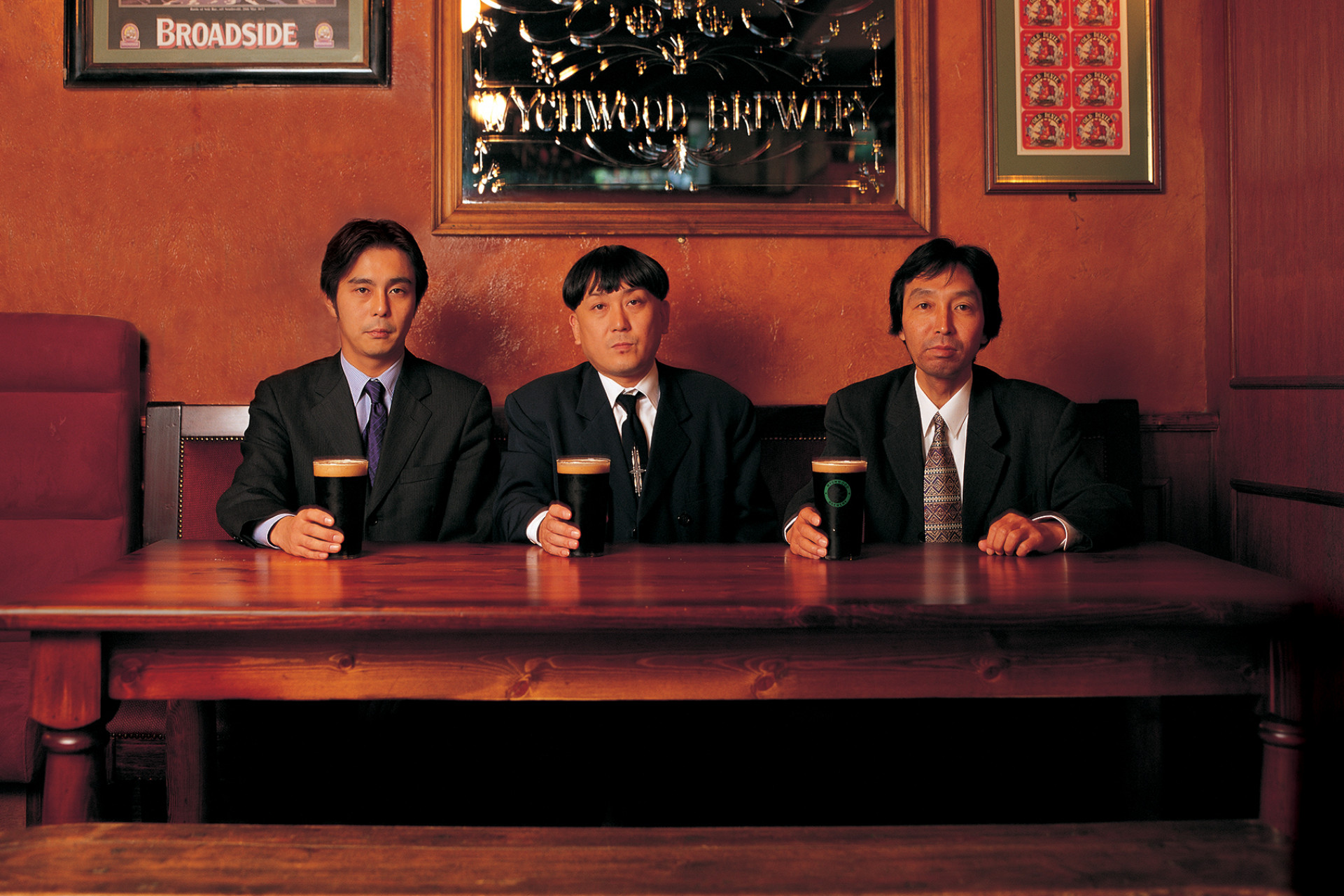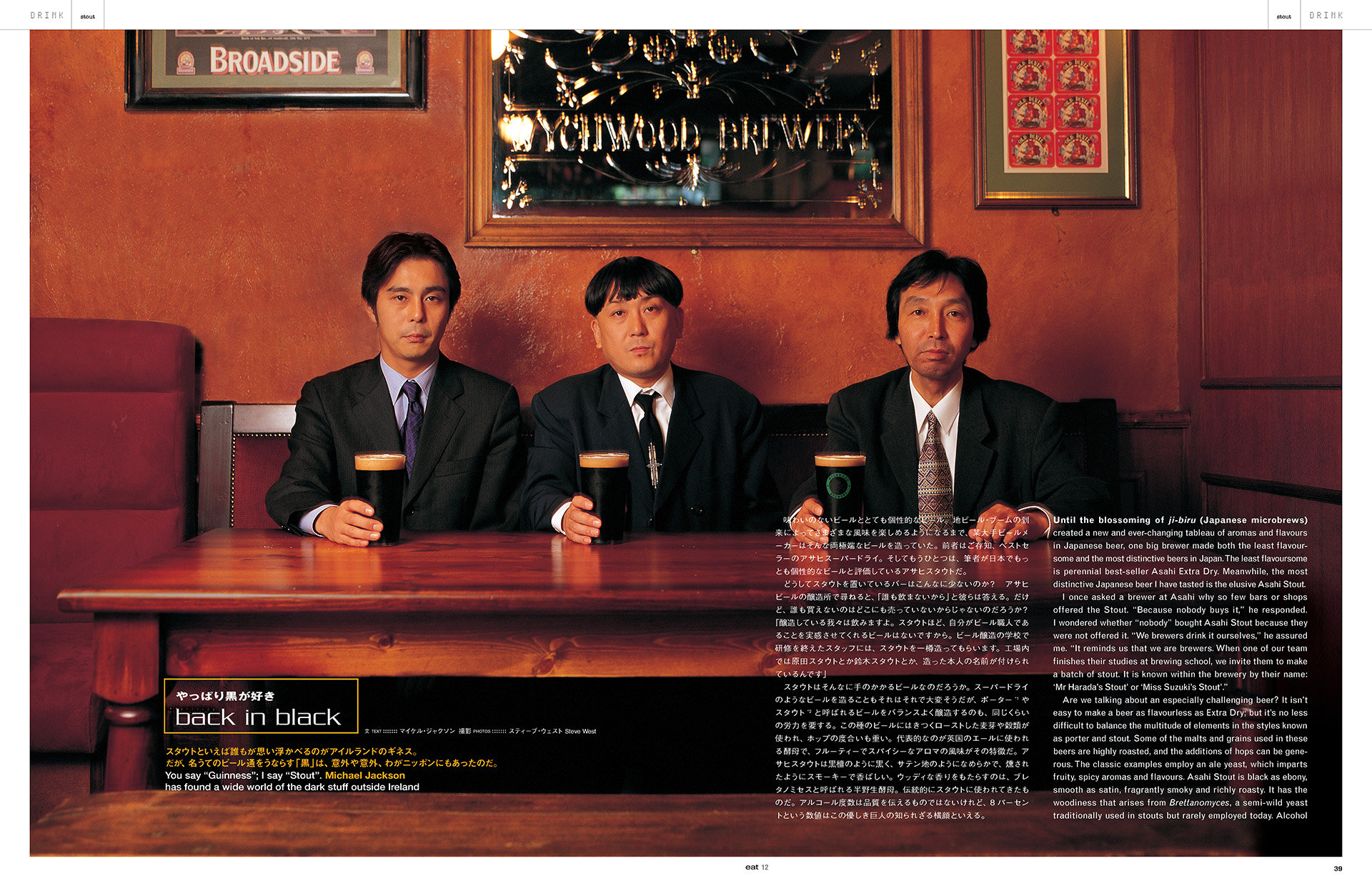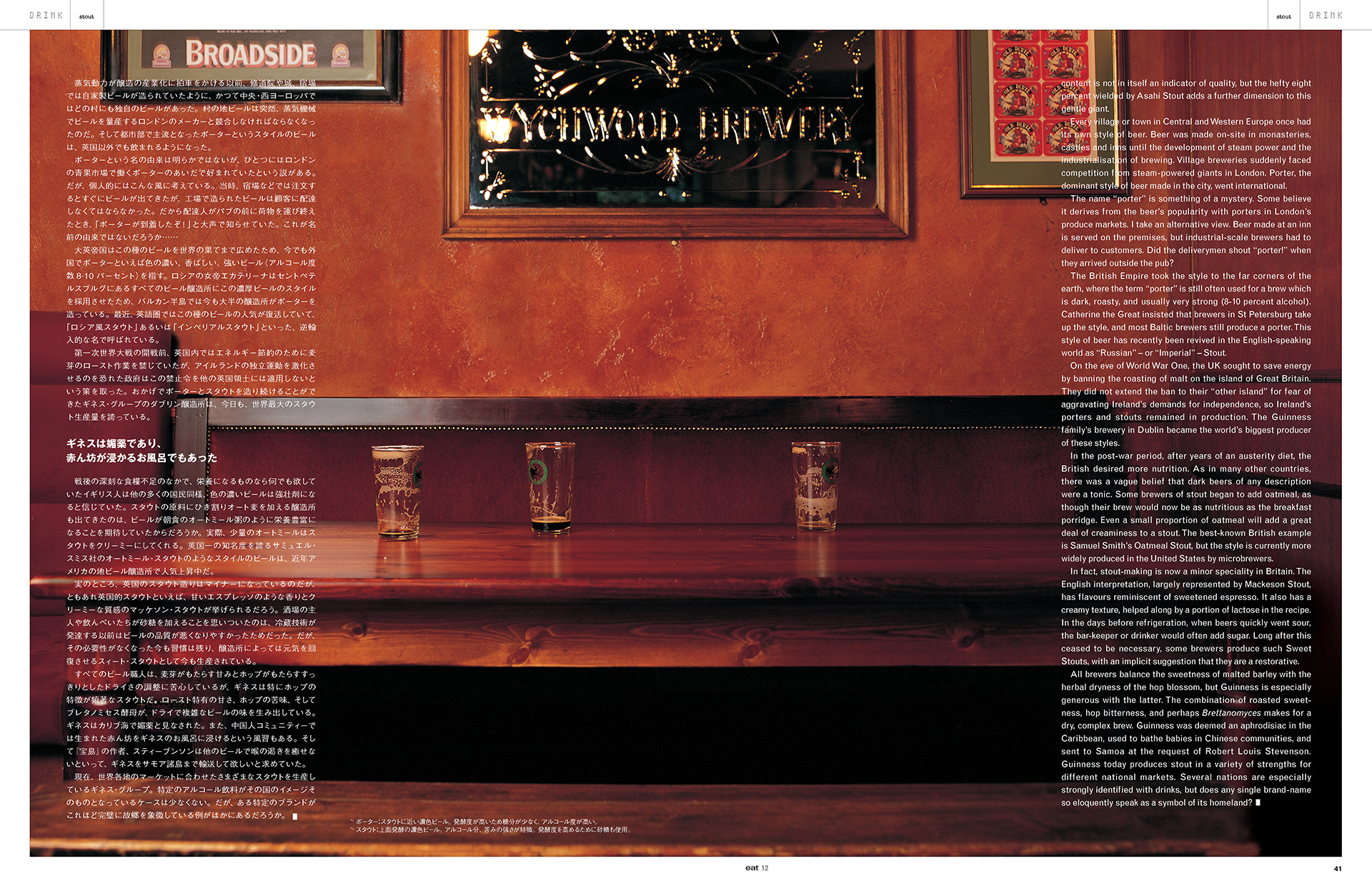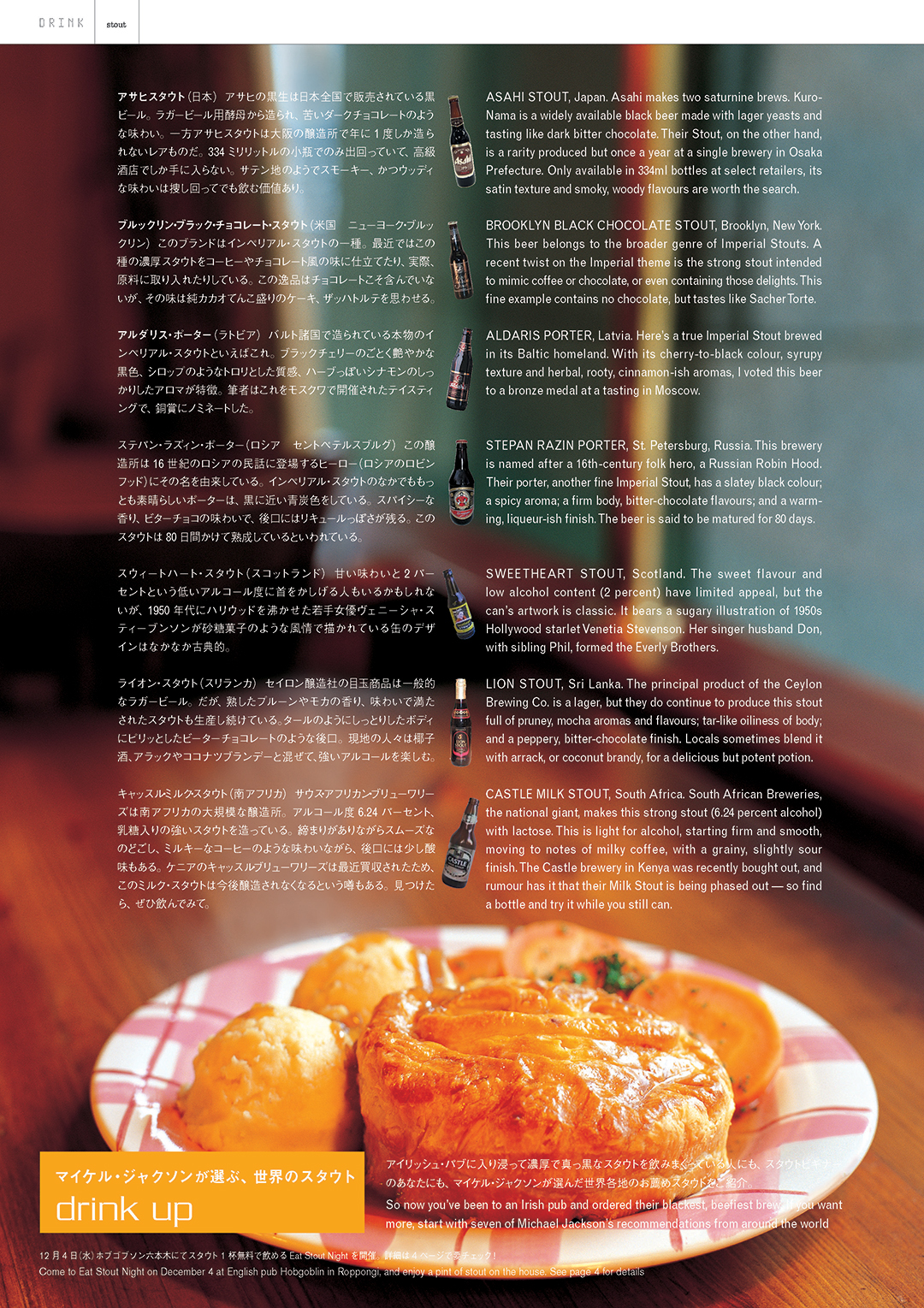Back in Black
Eat Issue 12: Rotten

This article was originally published in November 2002.
You say “Guinness”; I say “Stout”. Michael Jackson has found a wide world of the dark stuff outside Ireland.
Until the blossoming of ji-biru (Japanese microbrews) created a new and ever-changing tableau of aromas and flavours in Japanese beer, one big brewer made both the least flavour-some and the most distinctive beers in Japan. The least flavoursome is perennial best-seller Asahi Extra Dry. Meanwhile, the most distinctive Japanese beer I have tasted is the elusive Asahi Stout.
I once asked a brewer at Asahi why so few bars or shops offered the Stout. “Because nobody buys it,” he responded. I wondered whether “nobody” bought Asahi Stout because they were not offered it. “We brewers drink it ourselves,” he assured me. “It reminds us that we are brewers. When one of our team finishes their studies at brewing school, we invite them to make a batch of stout. It is known within the brewery by their name: ‘Mr Harada’s Stout’ or ‘Miss Suzuki’s Stout’.”
Are we talking about an especially challenging beer? It isn’t easy to make a beer as flavourless as Extra Dry; but it’s no less difficult to balance the multitude of elements in the styles known as porter and stout. Some of the malts and grains used in these beers are highly roasted, and the additions of hops can be gene-rous. The classic examples employ an ale yeast, which imparts fruity, spicy aromas and flavours. Asahi Stout is black as ebony, smooth as satin, fragrantly smoky and richly roasty. It has the woodiness that arises from Brettanomyces, a semi-wild yeast traditionally used in stouts but rarely employed today. Alcohol content is not in itself an indicator of quality, but the hefty eight percent wielded by Asahi Stout adds a further dimension to this gentle giant.
Every village or town in Central and Western Europe once had its own style of beer. Beer was made on-site in monasteries, castles and inns until the development of steam power and the industrialisation of brewing. Village breweries suddenly faced competition from steam-powered giants in London. Porter, the dominant style of beer made in the city, went international.
The name “porter” is something of a mystery. Some believe it derives from the beer’s popularity with porters in London’s produce markets. I take an alternative view. Beer made at an inn is served on the premises, but industrial-scale brewers had to deliver to customers. Did the deliverymen shout “porter!” when they arrived outside the pub?

The British Empire took the style to the far corners of the earth, where the term “porter” is still often used for a brew which is dark, roasty, and usually very strong (8-10 percent alcohol). Catherine the Great insisted that brewers in St Petersburg take up the style, and most Baltic brewers still produce a porter. This style of beer has recently been revived in the English-speaking world as “Russian” – or “Imperial” – Stout.
On the eve of World War One, the UK sought to save energy by banning the roasting of malt on the island of Great Britain. They did not extend the ban to their “other island” for fear of aggravating Ireland’s demands for independence, so Ireland’s porters and stouts remained in production. The Guinness family’s brewery in Dublin became the world’s biggest producer of these styles.
In the post-war period, after years of an austerity diet, the British desired more nutrition. As in many other countries, there was a vague belief that dark beers of any description were a tonic. Some brewers of stout began to add oatmeal, as though their brew would now be as nutritious as the breakfast porridge. Even a small proportion of oatmeal will add a great deal of creaminess to a stout. The best-known British example is Samuel Smith’s Oatmeal Stout, but the style is currently more widely produced in the United States by microbrewers.
In fact, stout-making is now a minor speciality in Britain. The English interpretation, largely represented by Mackeson Stout, has flavours reminiscent of sweetened espresso. It also has a creamy texture, helped along by a portion of lactose in the recipe. In the days before refrigeration, when beers quickly went sour, the bar-keeper or drinker would often add sugar. Long after this ceased to be necessary, some brewers produce such Sweet Stouts, with an implicit suggestion that they are a restorative.
All brewers balance the sweetness of malted barley with the herbal dryness of the hop blossom, but Guinness is especially generous with the latter. The combination of roasted sweet-ness, hop bitterness, and perhaps Brettanomyces makes for a dry, complex brew. Guinness was deemed an aphrodisiac in the Caribbean, used to bathe babies in Chinese communities, and sent to Samoa at the request of Robert Louis Stevenson. Guinness today produces stout in a variety of strengths for different national markets. Several nations are especially strongly identified with drinks, but does any single brand-name so eloquently speak as a symbol of its homeland?
Text: Michael Jackson / Photo: Steve West


